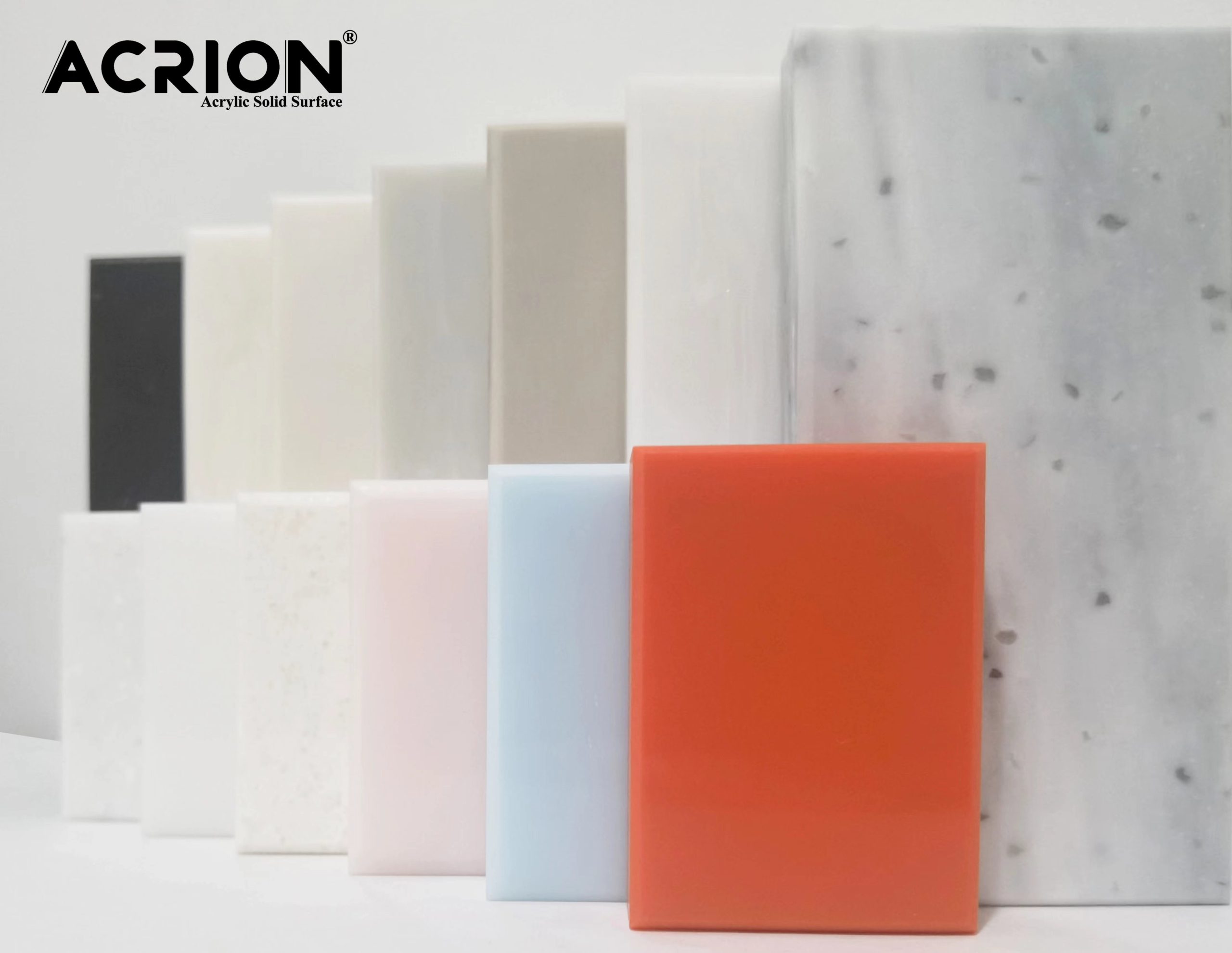In the design of high-end villas, the countertop, as the visual focus and functional core of the space, its material selection and design language directly affect the texture and experience of the overall space. Currently, countertop materials represented by high-performance artificial stone are redefining the design standards of high-end residences through technological innovation and aesthetic integration. The following analyzes its design logic from three dimensions: material characteristics, technological breakthroughs, and spatial narrative.
First, material characteristics: A dual evolution of functionality and aesthetics
The core competitiveness of high-end countertop materials stems from breakthroughs in their technical parameters and physical properties. This type of material takes natural minerals (such as trihydrated alumina) as the base, combines high molecular polymers (such as methyl methacrylate) with inorganic pigments, and forms a solid structure with uniform density and no pores. This material property gives it the following advantages:
Anti-fouling and antibacterial properties: The non-permeable surface can effectively block the penetration of oil, bacteria and ultraviolet rays. Certified by NSF, it can come into direct contact with food, meeting the strict requirements of high-end residences for health and safety.
Weather resistance and durability: In extreme environment tests, the material demonstrates anti-aging, anti-impact and wear-resistant properties, making it particularly suitable for outdoor kitchens in villas or humid coastal areas.
Heat repair and plasticity: Minor scratches can be restored to their original condition through professional grinding, and it supports thermoplastic molding technology, allowing for the processing of complex curved surfaces and seamless splicing structures.
Second, technological breakthrough: The leap from technology to art
High-end countertop design achieves a balance between functionality and aesthetics through technological innovation. Its technical highlights include:
Streamlined seamless design: Through hot-pressing forming technology, the countertop, washbasin and water barrier strip are integrally formed, eliminating the cleaning dead corners caused by traditional splicing gaps. For instance, the arc-shaped upward-flipping process makes the transition between the countertop and the wall natural, avoiding problems such as yellowing and color bleeding.
Color and texture customization: Offering over 60 color options, covering solid colors, granite, crystal rock and other series, and supporting CNC engraving technology, it can present relief textures or brand logos on the surface to meet personalized needs.
Cross-material integration capability: It can be seamlessly spliced with materials such as metal, wood, and glass. For instance, it can be combined with custom die-cast aluminum profiles to form a suspended island platform, or paired with ultra-white long rainbow glass to create a transparent background wall.
Third, spatial narrative: A design language driven by materials
In high-end villa projects, countertop design has transcended the functional realm and become the core carrier of spatial narrative:
Minimalist expression: In a certain modern minimalist villa case, the designer used textured paint and micro-cement walls as the background, and through matte texture countertops and metal accessories, formed a dialogue of light and shadow, creating a visual tension of “less is more”.
Wabi-sabi aesthetic practice: A certain wabi-sabi-style villa features shell-colored patterned countertops. The natural texture of these countertops echoes the material of the coarse earthenware dishes and the dry landscape, reinforcing the philosophical expression of “imperfect beauty”.
Futuristic creation: In a certain waterfront villa project in the Netherlands, the architect extended the cream-colored countertop to the building’s exterior wall, forming a seamless “white box” shape. Combined with the curved facade and suspended structure, it interprets the symbiotic relationship between technology and nature.
Fourth, sustainability: The underlying logic of long-term design
The environmental friendliness and maintenance costs of high-end countertop materials are becoming important considerations in the high-end residential market:
Low VOC emissions: The material complies with the international GREENGUARD standard, ensuring the safety of indoor air quality.
Long-lasting durability: Under normal usage conditions, the service life of the countertop can reach over 20 years, and it supports on-site repair and reprocessing, reducing resource waste.
Modular design: By deeply integrating storage systems such as USM module cabinets with the countertop, the space utilization rate is increased by 15%, and the cost of later renovation is reduced.
Conclusion
The design of high-end villa countertops has entered a new stage where “material is language”. From technical parameters to craftsmanship aesthetics, from spatial narratives to sustainability, designers are redefining the living experience through material innovation. In the future, with the popularization of technologies such as thermoplastic relief and semi-transparent effects, countertops will no longer be confined to functional carriers but will become the “fourth-dimensional interface” connecting architecture, nature and humanity.
